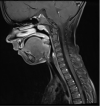SPECIAL CONSIDERATIONS IN PEDIATRIC TRACHEOSTOMY - A NARRATIVE REVIEW
- PMID: 38746619
- PMCID: PMC11090221
- DOI: 10.20471/acc.2023.62.s1.14
SPECIAL CONSIDERATIONS IN PEDIATRIC TRACHEOSTOMY - A NARRATIVE REVIEW
Abstract
Surgical tracheostomy is a life-saving procedure performed for emergent or expectant airway compromise. Morbidity in the pediatric population is higher than in adults due to smaller operating field, immaturity of tissues, anatomic specificities of the child's neck, or the presence of craniofacial dysmorphism. The procedure varies among surgeons regarding the position of the skin incision (vertical or horizontal), resection of the subcutaneous adipose tissue and isthmus of the thyroid gland, use of tracheal flaps, and use of maturation or stay sutures. Both early and late complications can be life-threatening, and include accidental decannulation, stomal plugging, bleeding, and difficult ventilating. Consistent tracheostomal care is crucial in avoiding complications. Primary caregivers must be included and educated about proper stomal care. Decannulation failures are common. Prerequisites for safe decannulation include non-dependence on mechanical ventilation and no recent aspiration events, positive endoscopic airway assessment, and successful daytime capping. The role of polysomnography in decannulation protocols is debated. Although seldom performed, tracheostomy is the procedure of choice in a selected group of pediatric patients. The risks and benefits of the procedure must be weighed for each patient. The education of medical personnel and caregivers is key to reducing serious complications.
Keywords: Airway management; Pediatrics; Tracheostomy, postoperative complications; Tracheotomy.
Sestre Milosrdnice University Hospital.
Figures
References
Publication types
MeSH terms
LinkOut - more resources
Full Text Sources

